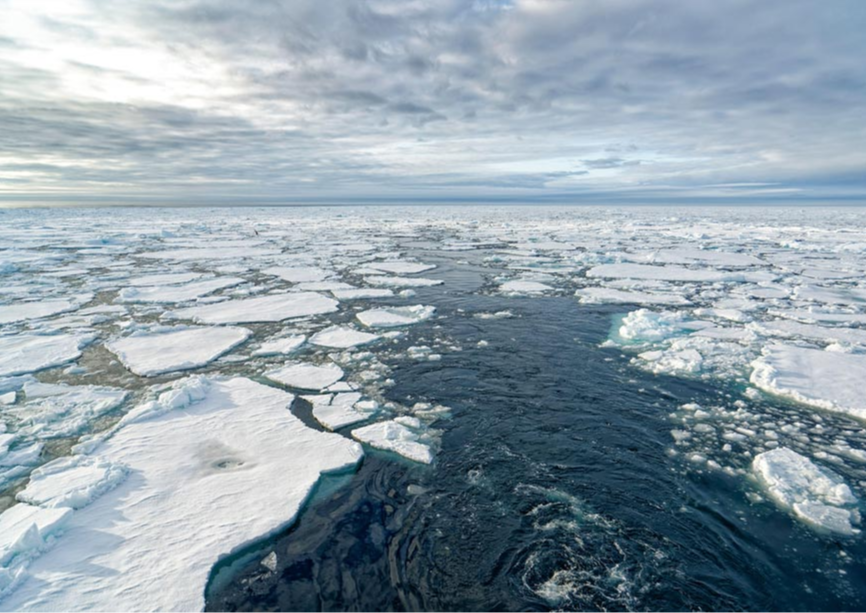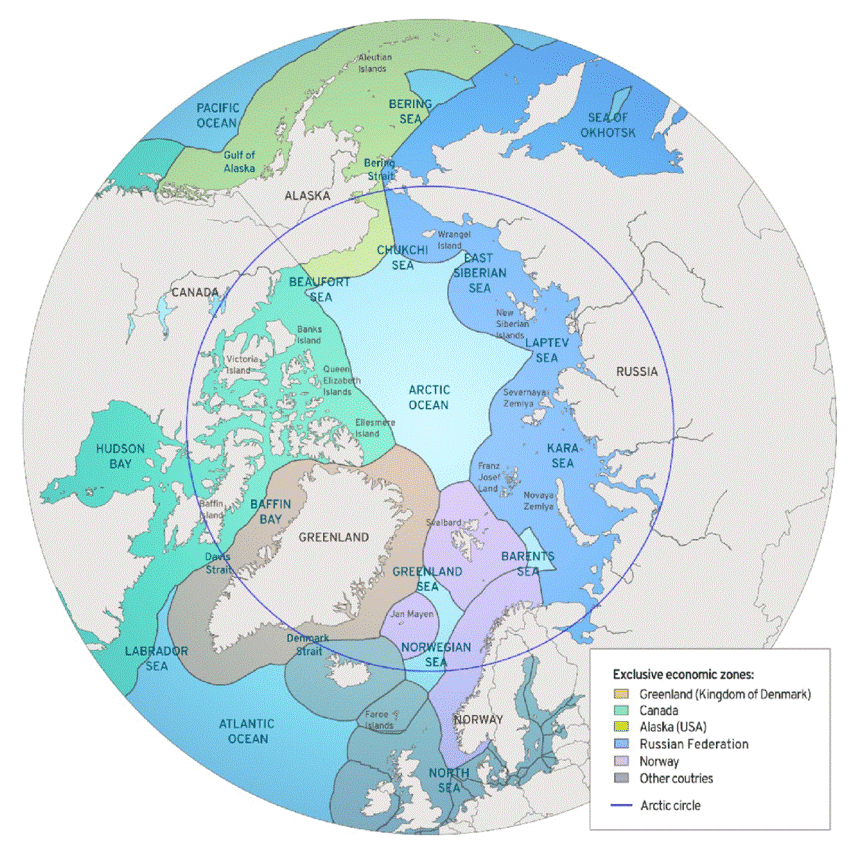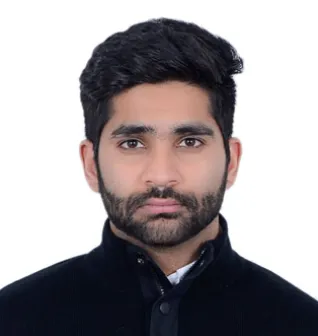
In the last two decades, the international community has shifted its attention towards one of the planet's most remote and challenging environments—the Arctic. This renewed focus stems primarily from the ecological transformations occurring in the region, a direct consequence of climate change.
Studies estimate that the Arctic could witness its first ice-free summer as early as the 2030s. This anticipated change may potentially ease access to the region’s abundant natural resources, including oil and gas, rare earth metals, marine livestock, and other Arctic minerals such as copper, zinc, coal, etc. Simultaneously, it may also open up new maritime routes in the region. Amidst these developments, a critical question arises: Who or what governs the Arctic region?
A common narrative suggests that akin to its counterpart, the Antarctic, the Arctic is a Global Common—a resource domain not falling within the jurisdiction of any one particular country, to which all nations have access. If this were true, we could have been witnessing an unprecedented race among nations to establish dominion over the region, much like the one we are likely to witness in space in a few decades.
This, however, is not exactly the case. To understand why, we need to understand its geography.

Map source: Institute for Advanced Sustainability Studies
As can be observed in the above map, the Arctic region consists primarily of three key components:
- The Arctic Ocean
- The land territories of the Arctic states
- The sea territories of the Arctic states
The Arctic Ocean, recognised as the world’s smallest and shallowest ocean, is surrounded by five countries—Canada, Denmark (Greenland), the United States (US), Russia, and Norway, as depicted in the map. The countries are often referred to as the Arctic coastal states.
UNCLOS
The distinct coloured areas surrounding each country in the above map represent their Exclusive Economic Zones (EEZ). As per the United Nations Convention on the Law of the Sea (UNCLOS), the EEZ constitutes the zone where the coastal country possesses certain rights, duties, and jurisdiction. This encompasses activities such as the exploration and exploitation of natural resources, power generation through wind and water, fishing, amongst others. Under Article 57 of the convention, this zone stretches up to 200 nautical miles from the baseline used to measure the breadth of the territorial sea. Beyond the 200 nautical miles from the coast of these states remains a triangle-shaped region, referred to as the Central Arctic Ocean (CAO) or simply the Arctic High Seas.
Adhering to international law in this case was advantageous to these countries as it allowed them to have control over a substantial area of the Arctic Ocean with minimal territorial conflicts.
Under the UNCLOS, these high seas are indeed a global common, the common heritage of mankind. Accordingly, all countries have certain inherent rights in these high seas, covering resource exploration and exploitation, fishing, scientific investigation, the right of navigation, and more.
Considering their national interests, the Arctic coastal countries jointly declared in 2008 that the Law of the Seas would be the appropriate framework to govern the Arctic region. Adhering to international law in this case was advantageous to these countries as it allowed them to have control over a substantial area of the Arctic Ocean with minimal territorial conflicts. Since the Arctic region comprises the land territories of Arctic states, maritime zones of Arctic coastal states, and the high seas, the region could very well be dubbed as a “Quasi-Global Common”.
Governance: The Arctic Council
Due to the peculiar conditions, inhospitable nature, and general lack of state assets and capabilities in the region, the Arctic necessitated a novel governance structure. To this end, under the Ottawa Declaration of 1996, the Arctic Council was established as a high-level intergovernmental forum by the Arctic States—the five Arctic coastal states plus Sweden, Finland, and Iceland.
In addition to these permanent members, the council has six Permanent Participants (PP) groups which represent the indigenous people of the Arctic, such as the Aleut International Association, Russian Arctic Indigenous Peoples of the North, and Saami Council. Moreover, an observer status has been granted to 38 non-Arctic nations which have shown keen interest in the activities of the region.
The council has six Permanent Participants (PP) groups which represent the indigenous people of the Arctic, such as the Aleut International Association, Russian Arctic Indigenous Peoples of the North, and Saami Council.
The Council is not a rule-making body; rather, it serves as a forum for cooperation and coordination among the Arctic States on areas such as sustainable development, scientific research, the environment, as well as the rights of the indigenous people. Its mandate explicitly excludes matters pertaining to military security.
The Arctic Council has been more or less successful in fulfilling its mandate despite an array of unique challenges it faces in the region on account of the following factors:
- Research-based environmental focus: The Council's emphasis on a research-based approach to environmental issues has played a crucial role. This focus helps in maintaining a regional and issue-based discourse, preventing the discussions from being overshadowed by great power rivalries.
- Leadership by small actors: The active role of small states, such as Norway, has been critical in mitigating confrontations between great powers. Small actors have provided leadership, facilitating a regional and issue-based discussion that avoids getting entangled in broader geopolitical rivalries. The fact that all states have an equal status in the council has been a big factor towards this.
- Consensus decision-making: The Arctic Council operates on a consensus basis, meaning decisions are made collectively. This approach, while limiting the range of issues initially addressed, has allowed the Council to build trust among its members, forming the basis for its de facto governance power.
- Respect for UNCLOS: The adherence to the United Nations Convention on the Law of the Sea (UNCLOS) by all parties, even when not all members or observer nations have ratified the treaty, contributes to stability. The commitment of major states like the U.S. and China to abide by UNCLOS despite their reservations with the convention, enhances the Council's effectiveness in governing the Arctic region.
Future of Arctic governance
Ever since its formation almost three decades ago, the landscape in which the Arctic Council was conceived has changed drastically. The environmental conditions of the world are not what they used to be 30 years ago, nor is the world order. Once considered remote, the region has become a focal point due to the economic opportunities and strategic importance amid climate change. This has led to stronger economic and geopolitical ties between the Arctic and the rest of the world, impacting regions far beyond the North.
Once considered remote, the region has become a focal point due to the economic opportunities and strategic importance amid climate change.
While the Council has demonstrated resilience in addressing the enormous challenges, the current ecological and geopolitical shifts may warrant a thorough revaluation of its functions and authority. The need for reassessment is underscored by recent events, such as the 2022 instance where the Council unilaterally rejected cooperation with Russia, a pivotal member with significant stakes in the Arctic and holding the position of the Council's Chair. This decision was driven by Russia's military campaign in Ukraine, highlighting the potential vulnerability of the Council's governance structure.
Against this backdrop, the Arctic Council's role has never been more crucial, as it assumes a vital position in guiding both Arctic and non-Arctic nations, along with indigenous communities, through the multifaceted challenges accompanying the ongoing transformations in the region.
Udayvir Ahuja is a Programme Coordinator with the Strategic Studies Programme at the Observer Research Foundation
The views expressed above belong to the author(s). ORF research and analyses now available on Telegram! Click here to access our curated content — blogs, longforms and interviews.





 PREV
PREV


